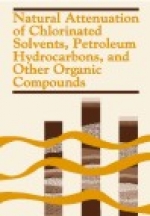Tab Article
The natural attenuation option is getting more attention from site managers and regulators as a viable alternative to more costly engineered site remediation approaches. Natural attenuation was first demonstrated at sites with hydrocarbon contamination, but recent studies at sites contaminated by chlorinated compounds have shown that this approach often has merit for those more challenging contamination problems. Covering natural attenuation in media ranging from deep aquifers to shallow soils, and for contaminates ranging from fuels to solvents to herbicides, this volume offers the reader a comprehensive overview of case studies that represent the current state of the art in natural attenuation approaches to site remediation. This volume is one of an eight- volume set of proceedings from the Fifth International In Situ and On-Site Bioremediation Symposium held in San Diego, April 1999.


